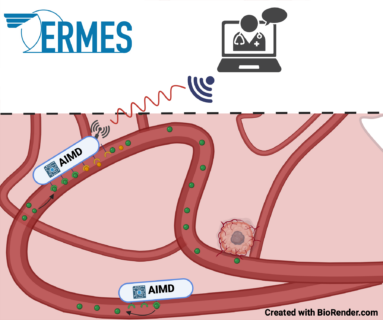EU funds work of IDC researchers with 500,000 Euros
Will sensors in the body be able to permanently monitor whether new tumours develop after cancer treatment? An international research consortium, including the Friedrich-Alexander-Universität Erlangen-Nürnberg (FAU), is working to make such visions a reality. Over the next three years, the partners will explore ways in which implanted medical devices can exchange information – both with each other and with the environment. The EU is providing €3.7 million as part of its Horizon programme. Around €500,000 will go to the FAU sub-projects.
There are already many medical devices that are implanted in the body during a minor operation and then take over important functions. One example is the cardiac pacemaker, which stabilises the rhythm of the hollow muscle. In the future, however, implants could be used for completely different purposes. After a tumour has been removed, they could be implanted in the tissue and monitor around the clock for the development of new tumours.
If the concentration of tumour markers in the tissue increases after months or years, the implant could sound an alarm. However, radio transmission is not reliable because tissue water and blood attenuate the signal. It is also difficult to fit the necessary antennas and batteries into small implants. Instead, the idea is to use a method that living cells also use to exchange information: not electromagnetic waves, but molecules. For example, when immune cells in the body detect a pathogen, they use messenger substances to call other immune cells for help. the implant could release a special signalling molecule into the bloodstream as soon as the amount of tumour markers increases. Ideally, this molecule could be detected externally without taking a blood sample, for example using optical sensors – perhaps even those in the patient’s smartwatch.
Research into molecular communication is still in its infancy. The EU project ERMES aims to change this over the next three years. Among other things, the participants want to investigate how signalling molecules spread in the organism. In ERMES, the team led by Prof. Dr. Robert Schober at the FAU is cooperating with the University of Regensburg, the Deggendorf University of Applied Sciences and partners from Finland and France, among others. The Università di Catania in Italy is in charge of the project, in which several companies are also involved.
Dr.-Ing. Maximilian Schäfer
Department of Electrical-Electronic-Communication Engineering
Institute for Digital Communications (IDC) (Prof. Dr. Schober)
- Phone number: +49 9131 85-25017
- Email: max.schaefer@fau.de
